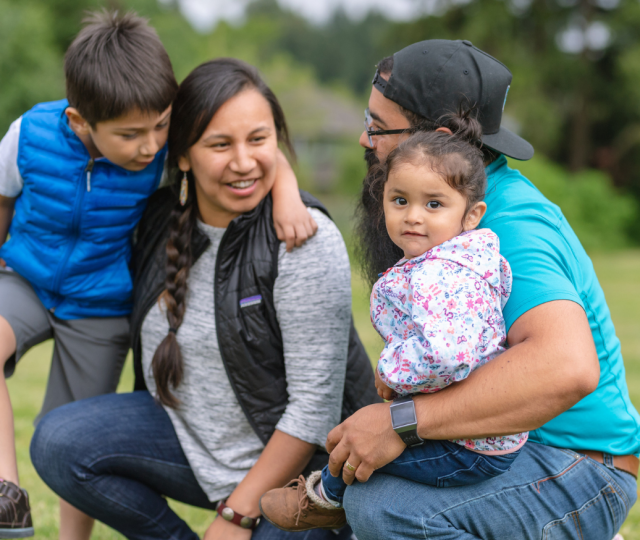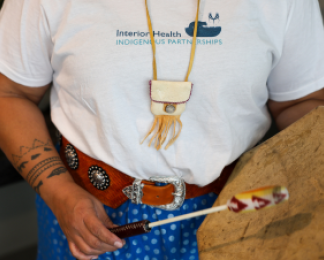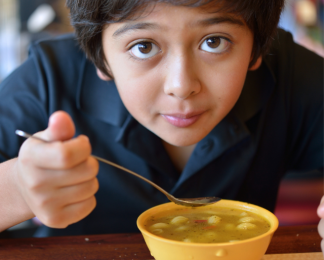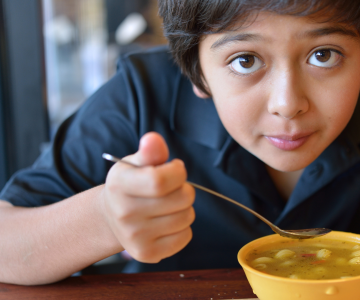Infant & Children Parenting (0-5 Years)
Learn about your child’s growth and development and how you can help them on this journey. Access resources and learn about support that’s available.

Growth and development
Babies come in all shapes and sizes; they grow and develop at their own pace. Your baby’s weight, length and head size will be monitored by your health care provider and by a public health nurse at each Child Health Clinic visit as they are important signs of your baby’s overall health and development.
Child development follows a natural course that begins at birth when a child is dependant on their parents for everything to increasing independence as they learn the skills to do things on their own.
As a parent, you play an important role in encouraging your child’s development.
Physical development is how your child‘s body grows and how they learn to use and control their bodies by practicing muscles movements and fine or small motor skills. At each Child Health Clinic visit a public health nurse will monitor your child’s development and provide you with information on your child’s current development and what to expect at the next stage.
- Child Behaviour & Development
- Baby Development
- Nutrition Information
- Dietitian Services at HealthLinkBC - call 8-1-1
- Ellyn Satter Associates: Helping children and adults be joyful and competent with eating
- Live 5-2-1-0: An initiative that partners with communities across British Columbia to promote healthy behaviours among children.
- Learning Through Play: Birth to five years activity cards for parents and child care providers
- Healthy Families BC: Physical Activity in Children
- Growth & Development Milestones ages 1 to 12 months
- Growth & Development Milestones age 1 through 10 years
- Is My Child Growing Well?
A healthy brain supports development in all other areas. Early experiences play an important role in developing your child’s brain. You can not spoil your baby by giving them too much attention. Your baby needs you to pay attention to them and respond with warmth, interest and enthusiasm. This type of interaction is called serve-and- return. Think of a tennis game between a parent and child where instead of hitting a ball back and forth you are ‘hitting’ back words, sounds, expressions, smiles and touch. These serve-and-return interactions help build new connections in your child’s brain and encourages them to learn.
Technology is here to stay so it’s important to be aware that use of devices such as TVs, smartphones, computers and tablets can interfere with serve-and-return interactions. The Canadian Paediatric Society recommends for:
- Children under 2 years of age, screen time is not recommended
- Children 2 to 5 years of age, screen time should be limited to less than one hour a day
- Children over 5 years of age, limit screen time to less than 2 hours a day.
Your baby will first talk to you by crying. Then they will coo, make sounds, smile and eventually start to use words. You can encourage the development of your baby’s speech & language skills by talking to them and by acknowledging them. For example: describe to them what you are doing when changing their diaper or give them a bath and respond back when they make sounds and expressions. Babies love to be told stories, read and sang to.
Infant crying
Bringing home a new baby is a joyous and exciting time for parents, but when that little bundle of joy won’t stop crying, parents can find themselves sleep deprived, frustrated and wondering what is wrong with their baby.
This constant uncomfortable crying phase in a baby’s life, is quite normal. This crying phase often begins around two weeks of age and continues to around three to four months. This phase can be very challenging for parents if they don’t understand why their baby won’t stop crying. View some ways to help cope when your baby cries a lot.
Infographic: Crying: Is my baby normal?
This common stage of infant development has a name - the Period of PURPLE Crying. The acronym PURPLE is used to describe what parents can expect at this stage:
- Peak of crying – The crying peaks at around two months of age and then begins to decrease gradually.
- Unexpected – Crying can come and go and you don’t know why.
- Resists soothing – A baby may not stop crying no matter what you try.
- Pain-like face – Babies may look like they are in pain even when they are not.
- Long lasting – Crying can last as much as five hours a day or more.
- Evening – Crying is more common in the late afternoon or evening.
Shaken baby syndrome is closely linked to the period of PURPLE crying. It’s a serious and potentially life threatening condition resulting from the brain bouncing back and forth against the skull when a child is shaken. This is a very dangerous practice and permanent damage to the baby can occur from as little as five seconds of shaking.
- It helps to know what you can do in the moment to cope with your emotions and keep your baby safe; it is important for parents to make sure they take a break. Consider the following suggestions:
- If you have a partner, tag team with them and take turns looking after the child.
- Call on a trusted friend or relative to come and care for baby while you take some time for yourself.
- Place the baby in a safe place, such as their crib, and leave the room for a few moments.
Parents and caregivers can find more information at www.purplecrying.info.
If you are concerned that your baby’s crying is constant, louder than usual, or if your baby has a fever, diarrhea or is vomiting, contact your health care provider or call HealthLink BC at 811.
Injury prevention
Protect your baby from all danger. Most injuries can be prevented and happen in your own home when you are not prepared for your baby’s next stage of development, such as learning to roll over, crawl, or walk.
Parenting education & support services
Our health promotion and prevention services are provided by a team of professionals committed to the health and well-being of communities at your local public health unit throughout Interior Health. Among them are public health nurses, speech-language pathologists, audiologists, community nutritionists, tobacco reduction coordinators, dental hygienists and others who provide community based services with a population health focus.
These services focus on health screening, health assessment, referral, and early treatment.
Find a health centre in your community. Speak to your care provider or a Public Health Nurse
Parenting programs offer education, tips and support for you. Find a health centre in your area to see what programs and groups are available in your community
Sleep
You can help your baby build good sleep habits so they learn how to get a good nights rest and ‘sleep like a baby’. For the first month of life, your baby will sleep about 18 hours in the day. This won’t be all at once though, usually they don’t sleep for more than 3 to 4 hours at a time and won’t sleep through the night until they are around 6+ months of age.
Tips for creating good sleep habits:
- Create night-time routines such as a warm bath, breastfeeding, rocking, singing and quiet time
- Make sure you have enough nap time during the day so your baby isn’t overtired at night
- At night, keep your child’s room quiet and dark.
- Have your baby nap in a room with normal to quiet daytime noises
- At about 6 months of age, your baby’s sleep patterns will change. The night will start out with very deep sleep followed by several hours of lighter sleep. During the lighter sleep, your baby will partially wake many times and may want to breastfeed, or be cuddled back to sleep. It is important for your baby to learn to fall back asleep on their own and not rely on you for feeding or cuddling. Once your baby learns this skill, you will both have a more restful night.
For more information, see Time for Bed , Safer Sleep for My Baby and Toddler Sleep
Tobacco & vaping
Protect yourself and your family from the toxic chemicals in tobacco smoke and vaping aerosols by keeping your home and vehicle smoke- and vape- free. It’s against the B.C. Motor Vehicle Act to smoke or use vapour products in a vehicle with a child under 16.
Babies breathe faster and have less developed immune systems than adults, so they are more affected by tobacco smoke and vapour. Babies are more likely to have
- Severe asthma and allergy attacks needing hospitalization,
- Ear and chest infections,
- Sudden Infant Death Syndrome (SIDS), and
- Learning and behaviour difficulties in later years.
- Smoke/vape outside, away from your baby.
- Do not let anyone else smoke/vape around your baby.
- Breastfeeding still provides many benefits to you and your baby even if you are unable to quit smoking/vaping. Breastfeed first before smoking or using nicotine gum, lozenges or an inhaler.
- Wear a “smoke-free” shirt after smoking to reduce the transfer of chemicals to your baby.
For more information, see the Babies Need Breathing Space brochure and Safer Sleep for Your Baby.
The best thing you can do is model a tobacco and vape-free lifestyle. Ensure that the spaces where your children live, learn and play are free of tobacco smoke and vapour. Create a smoke and vape-free home and vehicle, and make sure that your child’s other caregivers do the same. Support smoke and vape-free schools, playgrounds and playing fields in your community.
If you use tobacco, consider quitting. If it’s not time for you to quit yet, talk with your child about your experience with smoking. Parents who smoke can still make a difference by talking about how difficult it is to quit and that you hope they will not start.


In the 5 years since the In Plain Sight report was released, we’ve made strides towards being a culturally safe organization—but there’s more work to do.
/stories/ihs-fifth-plain-sight-response-supports-reconciliation


Inspired by her aunt’s career as a pharmacist, Angela became a pharmacy technician to use the hands-on aspect of compounding to benefit patient care.
/stories/we-are-ih-pharmacy-tech-enjoys-problem-solving-patients


Souper Meals brings students together once a week over locally made soup, fresh fruit, veggies and buns, all free of charge.
/stories/more-soup-benefits-universal-school-lunch-program


With decades of experience rooted in compassion and commitment to children’s health, Dr. Jeff Wong is carving a path for pediatric care at Kelowna Hospital.
/stories/dr-jeff-wong-leads-kelowna-pediatric-department-forward


The holidays season offers opportunities to drink alcohol, and it can be easy to overindulge. Get tips on how you can drink less - and live more.
/stories/holiday-spirit-tips-drinking-moderation-season


With the support of her mentors and coworkers, Niomi Wright found her true health-care calling as a care aide at Mountain View Lodge in Lillooet.
/stories/we-are-ih-care-aide-recognizes-value-mentors-and-colleagues
STAY CONNECTED
Receive news, alerts, public service announcements and articles right to your inbox.


Social emotional development is how a child expresses and manages their emotions and their ability to form healthy relationships with others. It starts with a healthy attachment by a loving and responsive caregiver that teaches a baby that they are safe and loved. This close bond between a baby and their caregivers is called attachment. Attachment lets a baby know that they are safe and loved.
Attachment grows stronger each time you show your baby love, attention and consistency. When you soothe and cuddle your baby every time they cry, you are showing them that they can always count on you for comfort.
When you are talking to your baby and responding to their smiles or cries and comforting them when they are upset or scared, you are supporting their mental health.